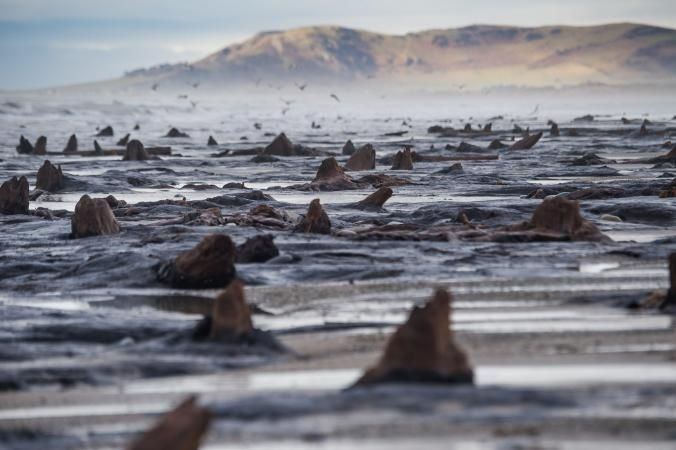Post by UKarchaeology on Jul 13, 2015 15:41:13 GMT

Storms lashing the British coast last month revealed a strange new sight off the west coast of Wales, near the village of Borth: the stumps of hundreds of tree trunks, rising out of the sand, like broken teeth.
Could this be part of Cantre'r Gwaelod, a mythical kingdom believed to have disappeared beneath the waves thousands of years ago? Has Wales's very own Atlantis been found? (Related: "Lost Lands Found by Scientists.")
It's like an episode of Game of Thrones: a mysterious, submerged forest; an ancient kingdom that was home to a priestess and her magic well.
Composed mostly of oak and pine, the forest is believed to date from the Bronze Age. It was buried under a peat bog 5,000 to 6,000 years ago, then inundated by rising sea levels until this winter's violent storms stripped away the covering of peat and sand. The high level of alkaline and lack of oxygen in the peat has preserved the wood in an almost pristine state.
A walkway made of sticks and branches was also discovered. It's 3,000 to 4,000 years old and was built, it is believed, to cope with rising sea levels back then. "The site around Borth is one where if there is a bad storm and it gets battered, you know there's a good chance something will be uncovered," says Deanna Groom, Maritime Officer of the Royal Commission on the Ancient and Historical Monuments of Wales, who helped find the site.
The submerged forest at Borth was not the only ancient site to have been uncovered by recent storms. Another submerged forest appeared at Mount's Bay, Cornwall. An ichthyosaur skeleton was discovered on the Jurassic Coast of Dorset and East Devon. At Happisburgh, Norfolk, footprints discovered in storm-exposed rocks are believed to be the earliest evidence of humans outside Africa, dating back 850,000 years. (See "Oldest Human Footprints Found Outside of Africa.")
But it's the mythical kingdom of Cantre'r Gwaelod that has captured people's imaginations. Also known as the Lowland Hundred, the kingdom was first mentioned in the Black Book of Carmarthen, the earliest surviving manuscript written in Welsh, created around 1250 A.D. The kingdom was believed to have been flooded when a maiden named Mererid allowed a well in her care to overflow.
In another version, Cantre'r Gwaelod was ruled by a lord named Gwyddno Garanhir and protected by a seawall known as Sarn Badrig (Saint Patrick's causeway) and a series of sluice gates. Two princes of the realm oversaw the sluice gates. One of them, Seithenyn, was a notorious drunkard who one night forgot to close the sluice gates, flooding the kingdom. (The church bells of Cantre'r Gwaelod were said to ring out in times of danger, a detail that gave rise to the popular 18th-century folk song, The Bells of Aberdovey.)
There is no scientific evidence for any of this. Signs of physical habitation have never been found near Borth. Sarn Badrig is actually a reef formed by the remains of a glacial moraine. But in a land that has given the world many folk tales and myths, facts have never been allowed to stand in the way of a good legend. And who knows, perhaps one day Cantre'r Gwaelod really will rise from the sea.
(source: news.nationalgeographic.com/news/2014/02/140226-wales-borth-bronze-age-forest-legend/ )
